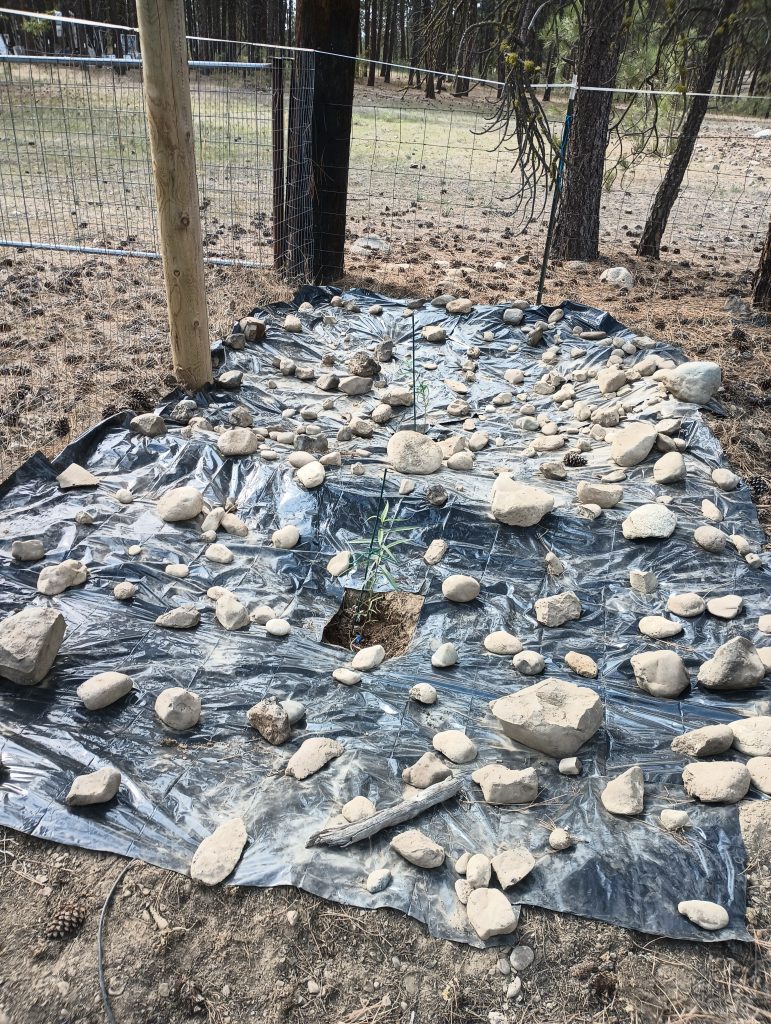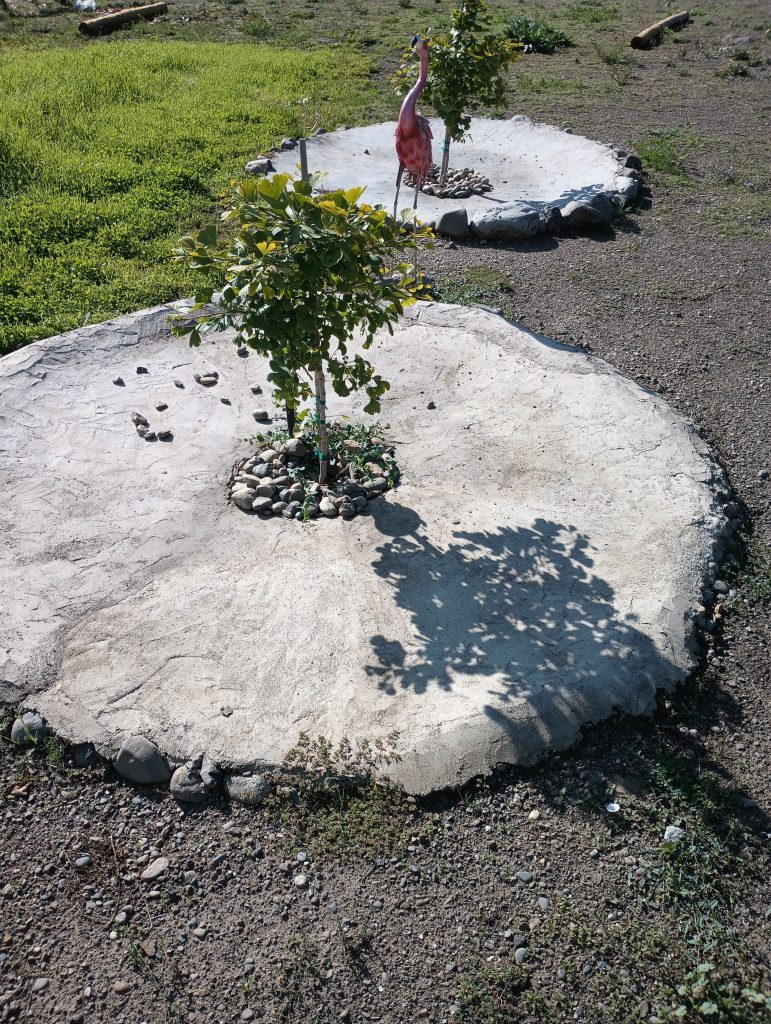
Reserve your RainAmp S1 today
Quantities are limited
Info@RainAmp.com
(269)-888-1655
Dryland agroforestry is a sustainable agricultural practice that involves cultivating trees, bushes, and vines in arid and semi-arid regions. It is of great importance in these areas as dryland regions cover about 40% of the Earth’s land surface and are home to millions of people who rely on agriculture for their livelihoods. However, water scarcity poses a significant challenge to agricultural productivity in these regions due to limited rainfall and high evaporation rates.
To address these challenges, innovative technologies like RainAmp have been developed to enhance dryland agroforestry systems. This article will explore the RainAmp technology and its benefits, as well as the science behind it. Additionally the steps to implement a dryland agroforestry system will be discussed.
RainAmp Technology: Enhancing Dryland Agroforestry
RainAmp technology is an innovative approach that addresses the water scarcity challenge in dryland agroforestry systems. By combining rain capture bowls and bio-sponge, RAINAMP ensures a consistent supply of moisture for trees, bushes, and vines in dryland areas. This technology enables the growth of vegetation even during dry periods, enhancing the sustainability of dryland agroforestry systems.
RainAmp technology captures and stores rainwater efficiently, providing a reliable source of moisture for plants. Rain capture bowls are strategically placed to collect and retain rainwater, preventing runoff and enabling its gradual release to the plants’ root zone. The bio-sponge, made from organic materials, acts as a water-absorbing layer that retains moisture in the root zone and reduces the need for irrigation.
For example, in a dryland agroforestry system in Ford Washington was implemented to help start Raspberry bushes from cuttings in areas that were inconvenient to reach for watering. Rain capture bowls were placed strategically and the bio-sponge was used to retain moisture in the soil. As a result first year cutting survival rates increased from 45% for untreated plants to 90% for treated plants. This can improve productivity and reduce replanting and delayed harvest.
The Science Behind RainAmp Technology
Rain capture bowls are designed to maximize water collection and minimize evaporation losses. They are shaped in a way that optimizes water capture during rainfall events, ensuring efficient rainwater storage. The design of the bowls includes a impermeable skin that helps prevent evaporation, allowing the collected water to be utilized by the plants.
The bio-sponge plays a crucial role in moisture retention. It absorbs and holds water in the root zone, reducing the frequency and amount of irrigation required. The bio-sponge acts as a reservoir, slowly releasing stored water to the plants, ensuring efficient water use.
S1 technology, incorporated in RAINAMP, stores excess water and drip-feeds it to trees until the next rainfall. This technology ensures that water is used efficiently and effectively, minimizing wastage and maximizing the benefits for the vegetation. It also maximized survival time between storms.
For instance, in a RainAmp dryland agroforestry test center in Ford WA was employed to improve water availability for trees in the arid region. The rain capture bowls and bio-sponge helped retain moisture in the soil, allowing trees to thrive even during prolonged dry spells.

Reserve your RainAmp S1 today
Quantities are limited
Info@RainAmp.com
(269)-888-1655
Benefits of Dryland Agroforestry
Dryland agroforestry offers numerous benefits for both the environment and communities in arid and semi-arid regions. The presence of trees enhances soil fertility by improving soil structure, nutrient cycling, and water-holding capacity. This leads to increased agricultural productivity and resilience to drought.
Furthermore, dryland agroforestry systems play a crucial role in conserving water resources. The trees’ deep roots help prevent water runoff and promote groundwater recharge, contributing to the sustainable management of water in these regions.
Dryland agroforestry systems also contribute to enhanced biodiversity and ecosystem services. The trees provide habitats for various plant and animal species, while also sequestering carbon and regulating the climate. Additionally, these systems can provide economic advantages through the sale of tree products such as fruits, nuts, and timber, diversifying income sources for communities.
Agroforestry projects incorporating RAINAMP technology can deliver improved agricultural productivity and food security while generating income for local communities through the sale of tree products.
Successful Case Studies in Dryland Agroforestry
RainAmp is recruiting partners to demonstrate demonstrate the effectiveness RainAmp technlogy in their dryland Agroforestry and Silviculture projects. We anticipate these projects demonstrating:
- Increased agricultural production.
- Improved agricultural profit margins.
- Increased crop yields
- Improved soil health
- Enhanced farmer livelihoods
- Improved water availability
- Increased tree cover
- Increased vegetation cover
- Enhanced resilience to drought
- Reversed soil degradation
- Reduced top soil loss to erosion
- Improved water efficiency
- Diversified income sources
- Improved soil fertility,
Implementing a Dryland Agroforestry System
To establish a successful dryland agroforestry system, several key steps need to be followed. Site selection is crucial, taking into consideration factors such as soil type, slope, and water availability. The selection of appropriate tree, bush, and vine species is also important, considering their adaptability to the specific climatic and soil conditions of the dryland area.
Proper design and installation of rain capture bowls and bio-sponge infrastructure are essential to ensure effective rainwater harvesting and moisture retention.
Regular maintenance and management practices, such as monitoring soil moisture, weed control, and appropriate pruning, are necessary for the long-term success of the system. The RainAmp S1 system will take care of soil moisture monitoring but humans still need to review the system performance metrics so they can act before minor issues become problems. The water impervious skins used in the rain collection bowls will prevent most weeds but a small amount can still grow right around the tree and it can become a problem when they happen to be a more aggressive but undesirable tree species.
Conclusion
Dryland agroforestry offers a promising solution to address water scarcity challenges and promote sustainable food production in arid and semi-arid regions. RainAmp technology provides a practical and innovative approach to enhance the growth of trees, bushes, and vines in these areas, contributing to improved agricultural resilience and livelihoods. Continued research, knowledge-sharing, and widespread adoption of dryland agroforestry practices, including RainAmp technology, can drive positive environmental and socio-economic outcomes in dryland regions. By harnessing the power of nature and innovative technologies, we can create a sustainable future for dryland agriculture.

One response to “Enhancing Dryland Agroforestry: RainAmp Technology for Consistent Moisture Supply”
[…] effectively captures, concentrates, and stores rainwater, guaranteeing that fodder trees receive enough water to prosper, even during extended periods of over 100 days without rain. This system provides a steady supply […]